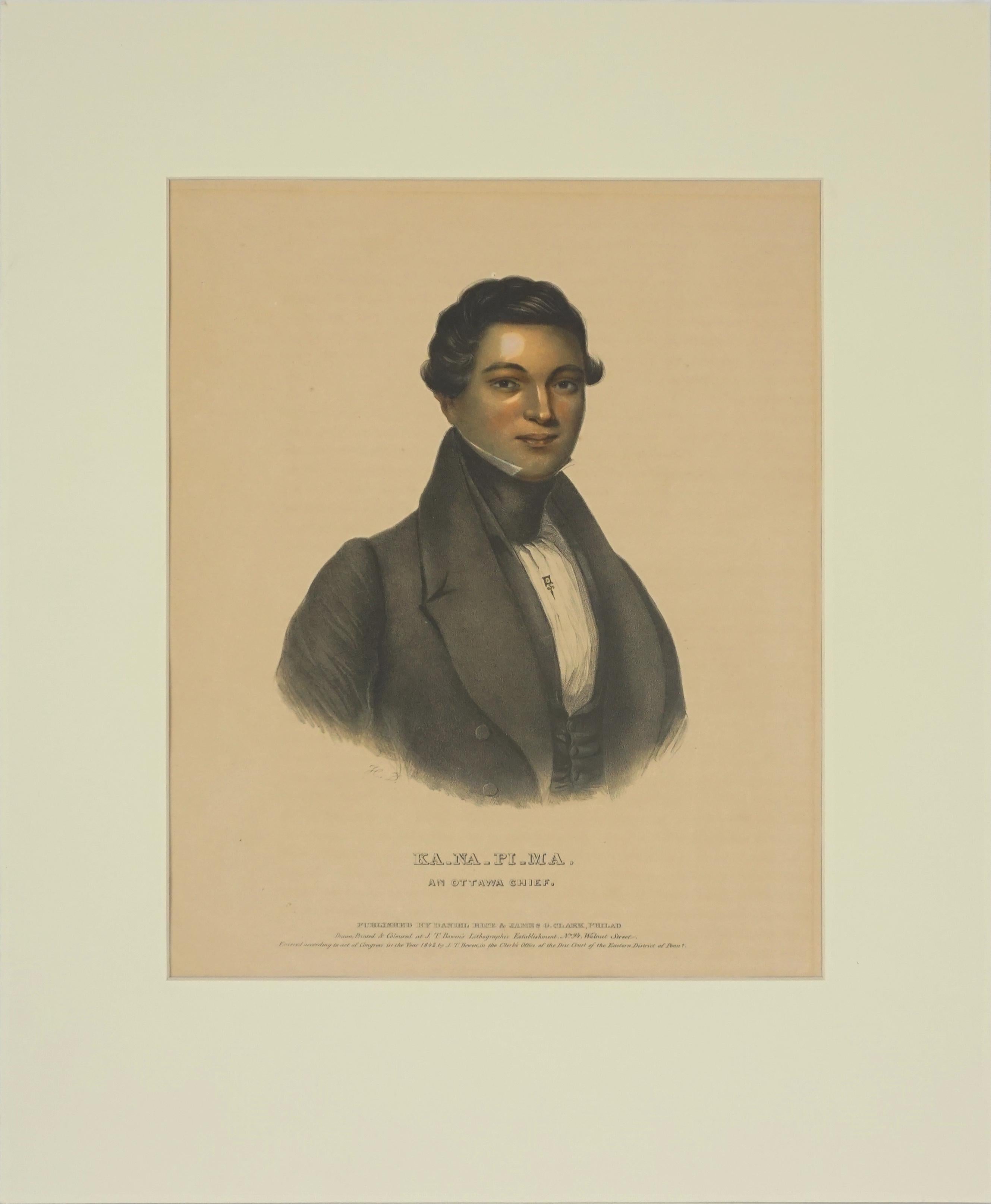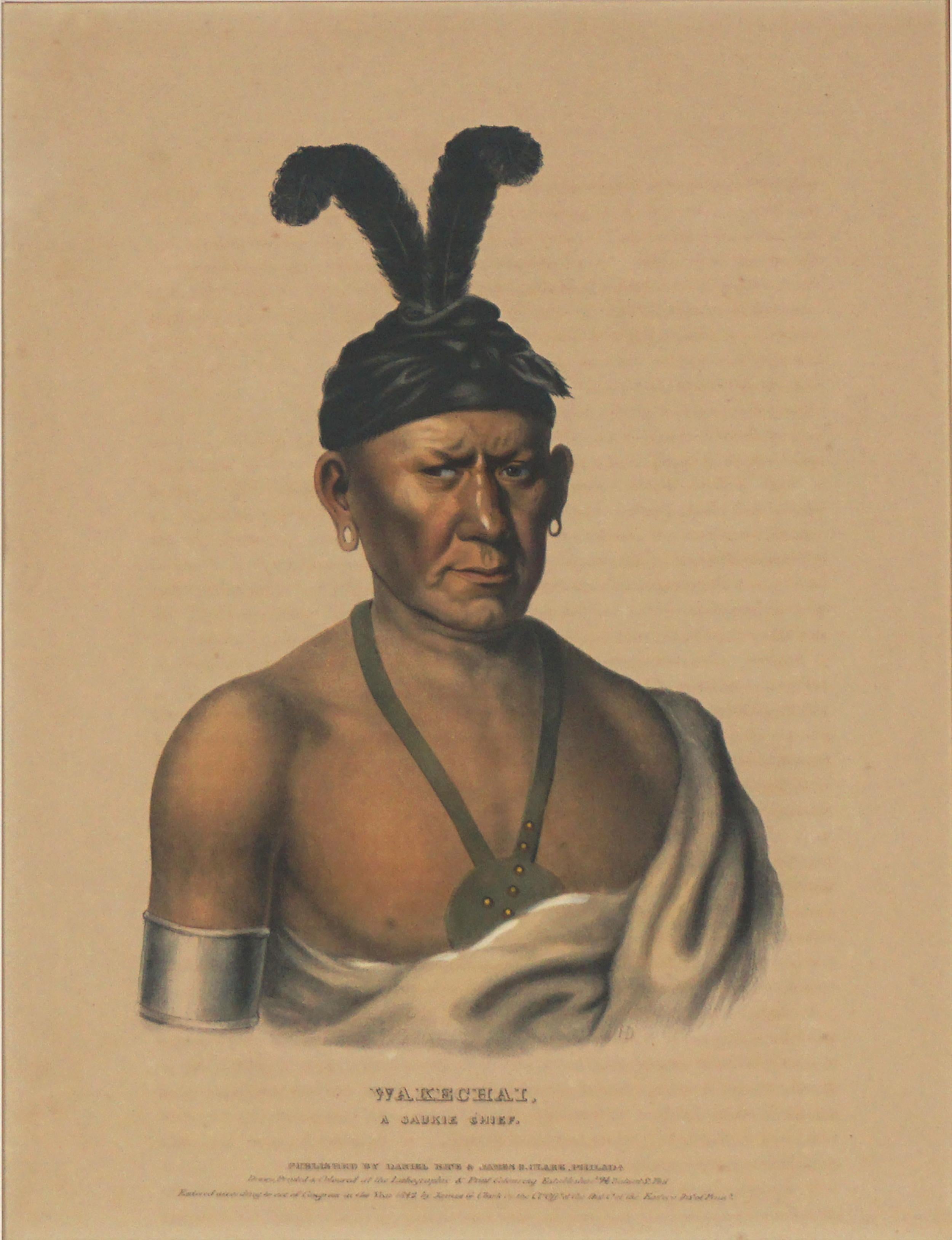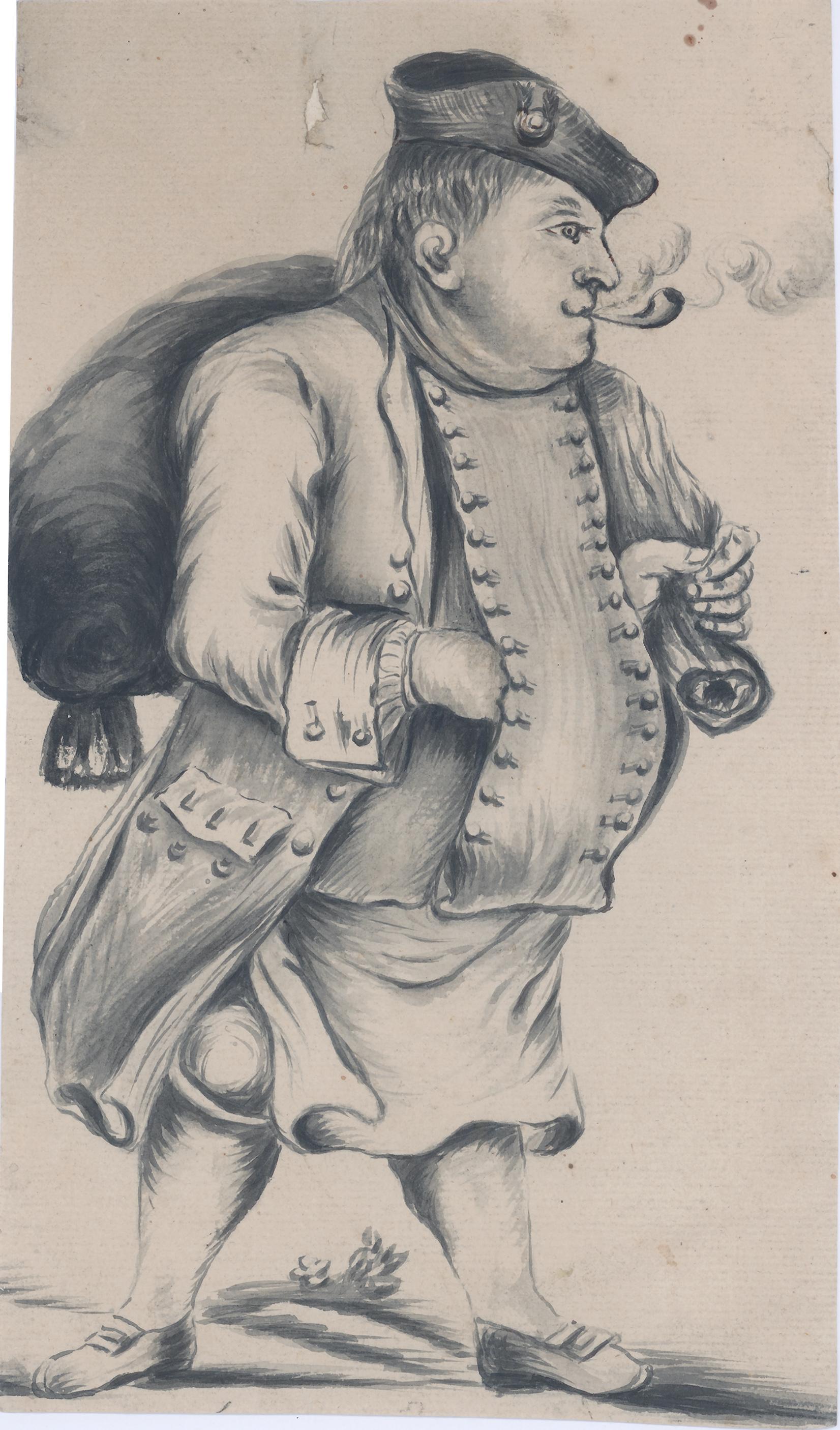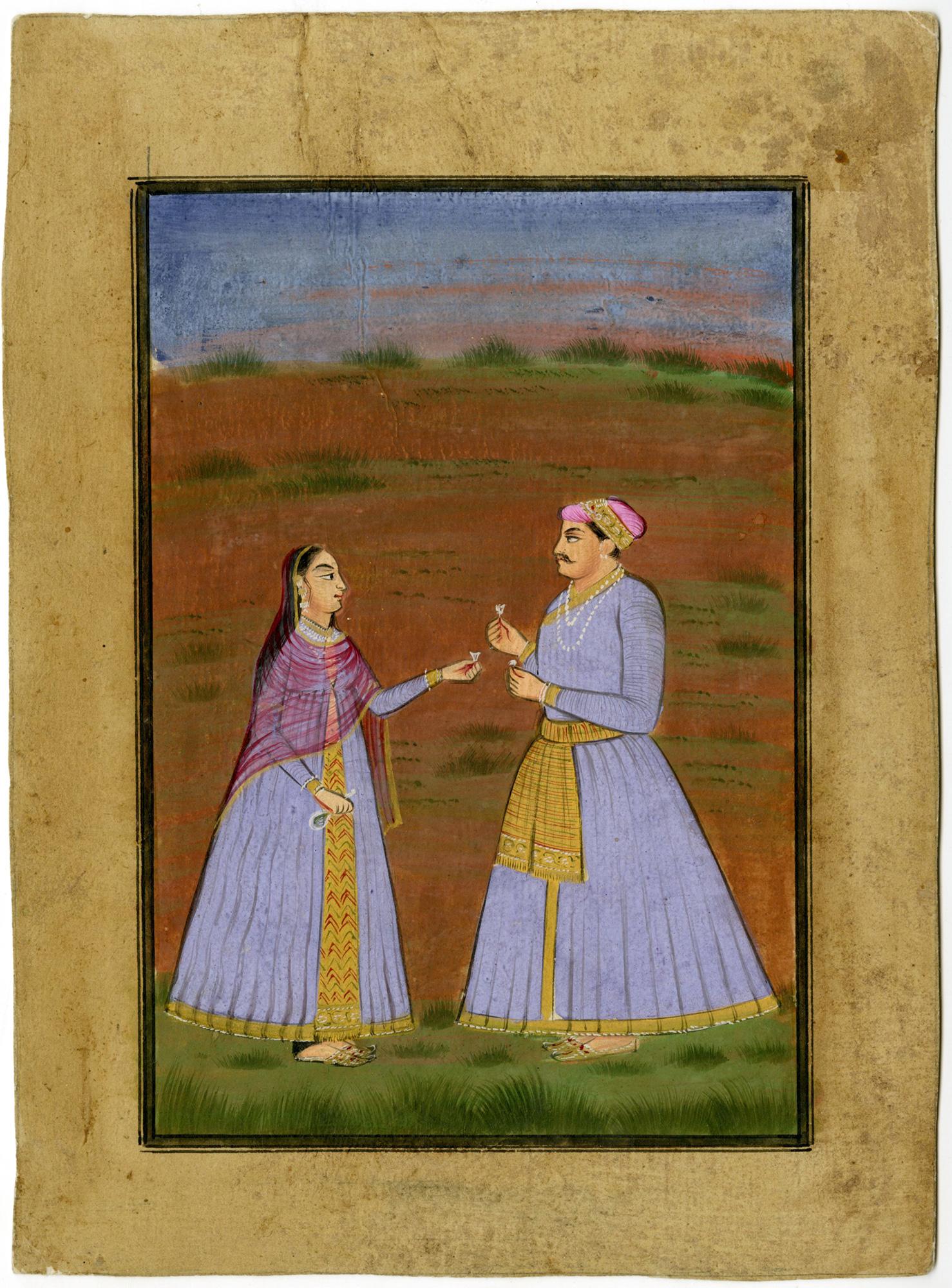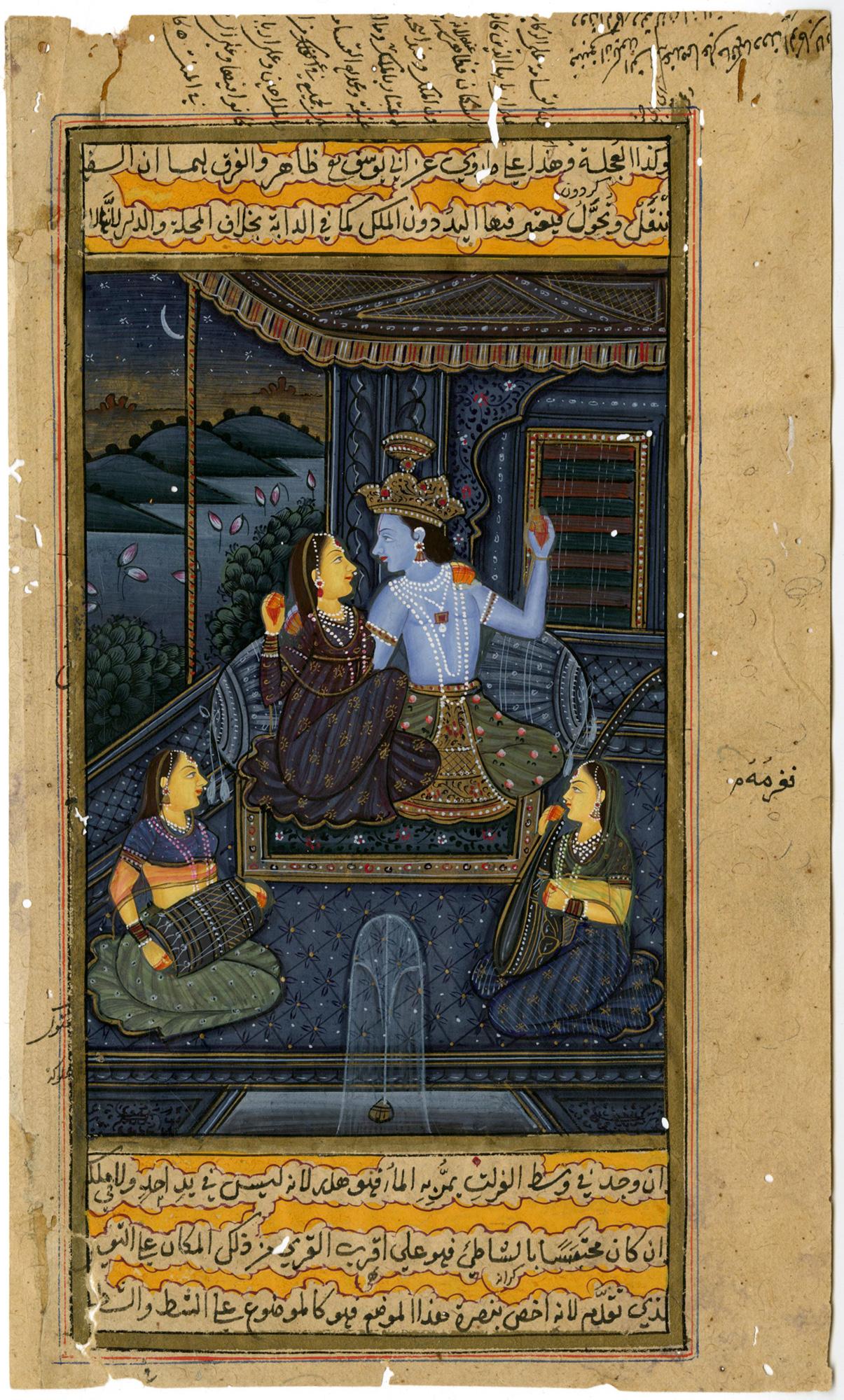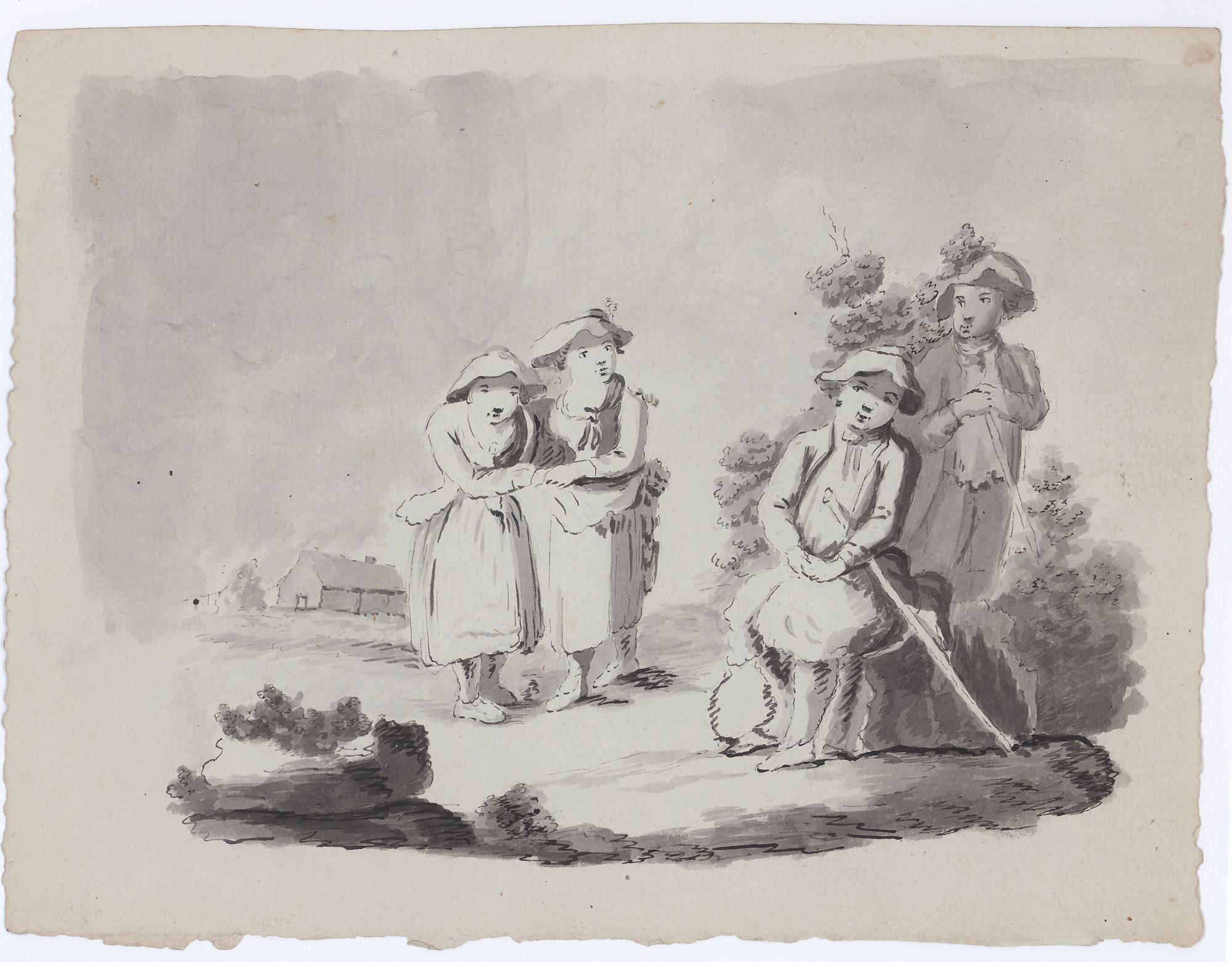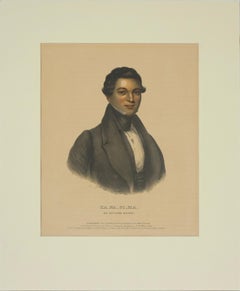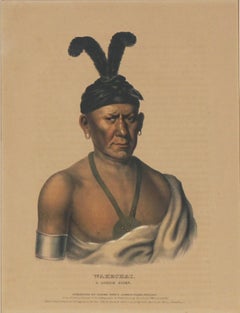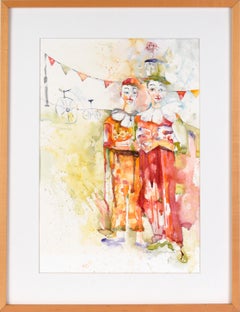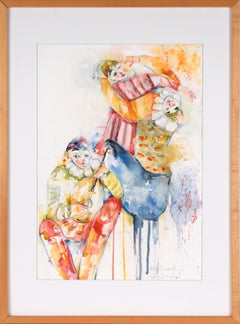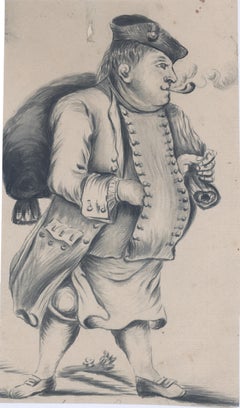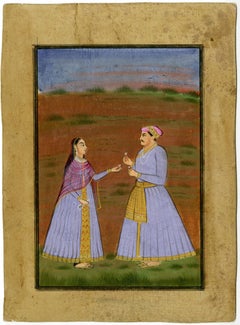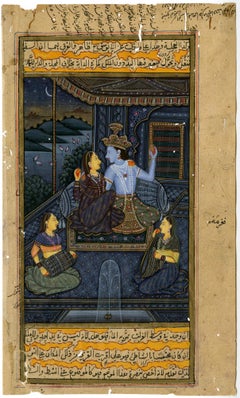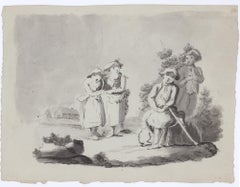Items Similar to John Ridge, A Cherokee Indian & Interpreter Lithograph with Applied Watercolor
Want more images or videos?
Request additional images or videos from the seller
1 of 9
Charles Bird KingJohn Ridge, A Cherokee Indian & Interpreter Lithograph with Applied Watercolor1838
1838
About the Item
1838 John Ridge A Cherokee Indian and Interpreter Lithograph with Applied Watercolor
The lithograph depicts John Ridge, a Cherokee interpreter, by Charles Bird King (American, 1785 - 1862), published 1838. Compared to other indian portraits in tribal regalia, King's rendering of John Ridge appears to be different. King portrayed John Ridge in Anglo-American clothing, sitting at a desk with a document and pen in hand—hinting at Ridge’s education and career as tribal leader and politician. King was known for his realistic and sensitive renderings of his sitters, and his ability to capture their physical features and attire with dignity and attention to detail.
Condition: Good; tonal aging due to age; previous mat tonal aging marks
Presented in new conservation mat
Paper size: 19.75"H X 14"W
Image size: 15"H x 10"W
Mat size:24"H x 16"W
John Ridge received his education at Foreign Mission School in Cornwall, Connecticut and served as clerk of the Cherokee National Council. When King painted his portrait in Washington, Ridge was an advisor to a Creek delegation who hoped to nullify an unlawful removal treaty signed by a few tribal members. Ironically, he would find himself in a position similar to that of these Creek treaty signers only a few years later. Originally opposed to the relocation of his own tribe, Ridge revised his opinion when he concluded that resettlement was unavoidable due to the discovery of gold in Georgia in 1829 and President Jackson’s Indian removal policy. He convinced a few other Cherokee members to sign the Treaty of New Echota in 1835 because he believed this was the only way to preserve and protect the rights of the Cherokee Nation. However, they signed the document without the knowledge and endorsement of Principal Chief John Ross and the National Party, who represented the majority of the tribe and opposed the removal. Although Ross petitioned Congress to void the treaty as invalid, it was ratified in 183
Thomas McKenney, United States Superintendent of Indian Trade, conceived the idea for a series of portraits of prominent Native Americans who visited Washington D.C. in the early 19th century. An established portraitist by the early 1820s, King was commissioned by McKenney to execute the series, resulting in rich character studies of his sitters. Members of the Indian delegation of 1825, such as this sitter, often received copies of their portraits.
Published by F. W. Greenough, Philad
"Drawn, Printed and Coloured at the I.T. Bowen's Lithographic & Print Colouring Establish. 94 Walnut St."
"Entered according to act of Congress in the Year 1838 by F. W. Greenough, in the Clerks Office of the District Court of the Eastern District of Penn."
Born in Newport, Rhode Island, Charles Bird King became famous for his portraits of distinguished Native Americans. He studied with Samuel King, colonial painter, and then at age 15, ran away to New York City where he worked in the studio of Edward Savage. From 1805 to 1812, he lived in London, studying with Benjamin West and sharing a studio with Thomas Sully.
In 1816, he settled in Washington D.C., becoming the city's first significant resident artist. He did portraits of politicians and then spent 16 years on a commission to paint members of a five-tribe Indian delegation, which came to the city in 1821. The results became the basis of the National Indian Portrait Gallery. The originals burned, but lithography copies remain.
Thomas McKenney was the Superintendent of Indian Affairs under three Presidents -- Madison, Monroe & Adams and was instrumental in having lithographs published of King's work. McKenney's persistence was a blessing to the following generations because it happened that most of the original Charles Bird King paintings were destroyed in a fire at the then new Smithsonian Institution in 1865. So the only record we have today of most of these early Indians are in fact the lithographs made by McKenney. They stand as some of the finest and most important prints ever made in America.
A visitor to his office in the War Department near the White House would have seen a carefully collected ‘museum’ of Indian artifacts. There were buffalo hides, ceremonial pipes, clothing and even a full size canoe over the doorway. Importantly, there were also portrait paintings of many of the tribal Chiefs and Sub-Chiefs that had come to Washington to meet the Great White Father, accept gifts and peace medals and sign peace treaties. Most of these portraits were done by the well known artist Charles Bird King.
The ritual of inviting the Indian Chiefs to Washington was one of the original stated missions of the Lewis & Clark Expedition brilliantly initiated by Thomas Jefferson. The underlying strategy presented to a hesitant Congress by Jefferson was to not only explore the vast continent West of the Mississippi for future settlement but more immediately to control the rivers and fur trade that had been previously dominated by French and English interests.
However, McKenney’s ideas of treating the Indians fairly and with respect were ideologically not in line with the policies of the Andrew Jackson administration and therefore he was forced to resign his post in 1830. By this time, however, he had already had the idea of making a series of lithographs after the collection of Indian portraits. It was a project that took him the next fourteen years to complete -- through years of near bankruptcy, numerous printers and emotional distress.
His persistence was a blessing to the following generations because it happened that most of the original Charles Bird King paintings were destroyed in a fire at the then new Smithsonian Institution in 1865. So the only record we have today of these early Indians are in fact the lithographs made by McKenney. They stand as some of the finest and most important prints ever made in America.
- Creator:Charles Bird King
- Creation Year:1838
- Dimensions:Height: 24 in (60.96 cm)Width: 16 in (40.64 cm)Depth: 0.2 in (5.08 mm)
- Medium:
- Movement & Style:
- Period:
- Condition:Good; tonal aging to paper; previous mat tonal aging marks.
- Gallery Location:Soquel, CA
- Reference Number:Seller: D97081stDibs: LU54215706642
About the Seller
5.0
Platinum Seller
Premium sellers with a 4.7+ rating and 24-hour response times
Established in 1986
1stDibs seller since 2014
2,875 sales on 1stDibs
Typical response time: <1 hour
- ShippingRetrieving quote...Shipping from: Soquel, CA
- Return Policy
Authenticity Guarantee
In the unlikely event there’s an issue with an item’s authenticity, contact us within 1 year for a full refund. DetailsMoney-Back Guarantee
If your item is not as described, is damaged in transit, or does not arrive, contact us within 7 days for a full refund. Details24-Hour Cancellation
You have a 24-hour grace period in which to reconsider your purchase, with no questions asked.Vetted Professional Sellers
Our world-class sellers must adhere to strict standards for service and quality, maintaining the integrity of our listings.Price-Match Guarantee
If you find that a seller listed the same item for a lower price elsewhere, we’ll match it.Trusted Global Delivery
Our best-in-class carrier network provides specialized shipping options worldwide, including custom delivery.More From This Seller
View AllKa-Na-Pi-Ma, An Ottowa Chief Hand-Colored Lithograph
Located in Soquel, CA
KA-NA-PI-MA, AN OTTAWA CHIEF., from History of the Indian the Indian Tribes of North America, ca. 1842, hand-colored lithograph
The lithograph by Charles Bird King depicts Ka-na-pi...
Category
1840s Hudson River School Figurative Drawings and Watercolors
Materials
Watercolor, Laid Paper, Lithograph
Wakechai (Crouching Eagle) A Saukie Chief Lithograph with Applied Watercolor
Located in Soquel, CA
1842 Wakechai (Crouching Eagle) A Saukie Indian Chief Lithograph with Applied Watercolor
The lithograph depicts Wakechai, also known as Crouching Eagle, who was a member of the Sauk and Fox delegation. King renders Wakechai with exceptional detail. The Saukie Chief is adorned with fine accoutrements such as a white fur robe...
Category
1840s Hudson River School Figurative Drawings and Watercolors
Materials
Watercolor, Laid Paper, Lithograph
"Sacred Arts" - Figurative Harlequin Clown Watercolor on Heavy Paper
By Sefla Joseph
Located in Soquel, CA
"Sacred Arts" - Figurative Harlequin Clown Watercolor on Heavy Paper
Watercolor of two clowns by Sefla Joseph (Canadian, 20th Century). The clowns stand next to each other, hands intertwined. They are wearing bright red and orange clothing...
Category
Early 2000s Expressionist Figurative Drawings and Watercolors
Materials
Watercolor, Laid Paper
"A Sense of Balance" - Figurative Harlequin Clown Watercolor on Heavy Paper
By Sefla Joseph
Located in Soquel, CA
"A Sense of Balance" - Figurative Harlequin Clown Watercolor on Heavy Paper
Watercolor of three clowns by Sefla Joseph (Canadian, 20th Century). Three clowns are standing closely to...
Category
Early 2000s Expressionist Figurative Drawings and Watercolors
Materials
Watercolor, Laid Paper
Indian Dancer - Vintage Illustration in Ink and Watercolor
By Irene Pattinson
Located in Soquel, CA
Indian Dancer - Vintage Illustration in Ink and Watercolor
A stoic, dark-haired woman in elaborate dress is sitting cross-legged in this illustration by Irene Pattinson (American, 1909-1999). Pattinson uses fine ink line detail and a vibrant pink watercolor for a splash of color.
Signed at the bottom, "Irene Pattinson."
Provenance: The Artist, Estate of Irene Pattinson: David Carlson; Estate of Larry Miller Fine Art, Robert Azensky Fine Art.
Presented in a new white mat with foam core backing.
Mat size: 16"H x 12"W
Paper size: 11.75"H x 8.5"W
Image size: 7.5"H x 6.5"W
Irene Pattinson (American, 1909-1999) studied at the California School of Fine Art (now The San Francisco Art Institute), San Francisco State College and The Marion Hartwell School of Design. She was President of the San Francisco Woman Artists Association 1955-56.
Provenance: The Artist, Estate of Irene Pattinson: David Carlson; Estate of Larry Miller Fine Art, Robert Azensky Fine Art.
Solo Exhibitions: Lucien Labaudt Gallery 1955; San Francisco Museum of Art, 1961 (39 works).
Selected Group Exhibitions: San Francisco Art Association Annual 1948, 54, 55; San Francisco Woman Artists, 1957-1960; Oakland Art Museum Annual, 1951, 58; California Palace of the Legion of Honor, 1960; Richmond Art Center, 1955, 56, 57, 58; San Francisco Art Institute 1959, 60. The Art Bank of the San Francisco Art Association, 1958, 59, 60, 62, 63; Winter Invitational, California Palace of The Legion of Honor, San Francisco, 1960; Fourth Winter Invitational, California Palace of The Legion of Honor, San Francisco, 1963.
Awards: First Place, San Francisco Woman Artists Assoc., 1957, 1959; San Francisco Art Festival 1957;Literature: San Francisco Art Institute - A catalog of the Art Ban 1962/63; San Francisco and the Second Wave: The Blair Collection
Exhibitions:
1963 The Art Bank of the San Francisco Art Association, San Francisco, CA
1963 California Palace of The Legion of Honor: Forth Winter Invitational, San Francisco, CA
1962 The Art Bank of the San Francisco Art Association, San Francisco, CA
1961 San Francisco Museum of Art, San Francisco, CA
1960 California...
Category
1950s American Modern Figurative Drawings and Watercolors
Materials
Paper, India Ink, Watercolor, Pen
African Mama - Vintage Illustration in Ink and Watercolor
By Irene Pattinson
Located in Soquel, CA
African Mama - Vintage Illustration in Ink and Watercolor
A charming illustration, by Irene Pattinson (American, 1909-1999), shows a woman with a...
Category
1950s American Modern Figurative Drawings and Watercolors
Materials
Paper, India Ink, Watercolor, Pen
You May Also Like
Seaman in petticoat breeches and slops, smoking a pipe, carrying a carpetbag.
Located in Middletown, NY
English School, 18th century
Pen and black ink with gray wash on cream laid paper, 9 1/4 x 5 inches (238 x132 mm). 1/4 inch repaired loss, top center, to the left of the figure’s h...
Category
18th Century Realist Portrait Drawings and Watercolors
Materials
Ink, Watercolor, Laid Paper, Pen
Mughal School, 18th Century Emperor Jahangir with Empress Nur Jahan
Located in Middletown, NY
Emperor Jahangir and Empress Nur Jahan exchanging lotus blossoms; a symbol of beauty, purity, honesty, rebirth, self-regeneration, and enlightenment....
Category
18th Century Rajput Figurative Drawings and Watercolors
Materials
Gold
Rajput School, 17th century Krishna with his beloved, Radha; from Mahabharata
Located in Middletown, NY
Vishnu in the form of Krishna being serenaded with his beloved Radha. An illuminated page from the epic of Mahabharata
circa 1690. Gouache and ink with gold heightening on cream lai...
Category
18th Century Rajput Figurative Drawings and Watercolors
Materials
Gold
The Introduction, French School, 18th century
Located in Middletown, NY
In this charming scene a maid appears bashful as she is introduced by her mother to the shepherd’s son.
Ink and wash on hand made, cool-toned cream laid paper, 6 3/4 x 8 7/8 inches...
Category
Mid-18th Century French School Figurative Drawings and Watercolors
Materials
Ink, Watercolor, Handmade Paper, Laid Paper
Nur Jahan seated with a painted spice jar. Rajasthani School, 19th cent.
Located in Middletown, NY
Ink and gouache with gold heightening on fibrous, brown laid paper with a Jaipur Court Fee tax stamp in purple ink, 13 3/8 x 8 3/4 inches (340 x 222 mm). Toning, handling creases and...
Category
19th Century Rajput Figurative Drawings and Watercolors
Materials
Gold
Three hunters; two with a spear and dagger... Rajasthani School, 19th century
Located in Middletown, NY
Ink and gouache with gold heightening on brown laid paper with a Jaipur Court Fee tax stamp in black ink, 12 5/8 x 8 9/16 inches (320 x 217 mm). Toning, handling creases and minor sc...
Category
19th Century Rajput Figurative Drawings and Watercolors
Materials
Gold
